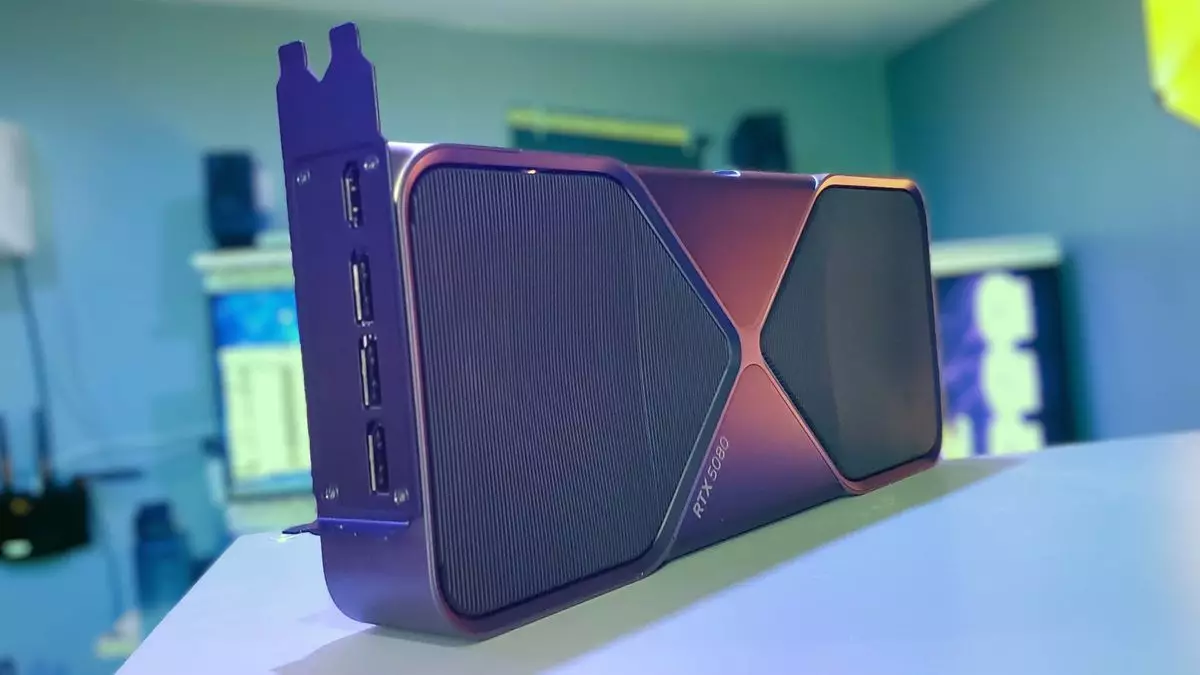The recent unveiling of Nvidia’s RTX 50-series graphics cards has captured the attention of tech enthusiasts and gamers alike, prompting a swirl of reactions from the community. Descriptions have ranged from “the most powerful graphics core you can jam into a gaming PC” to sentiments expressing lackluster excitement. As the dust settles, it becomes essential to dissect these reactions, examine the implications of the launch, and understand consumer behavior in the ever-evolving market of graphics technology.
Nvidia’s RTX 50-series launch made an immediate impact on retailers. Newegg, one of the largest platforms for PC components, reported record sales; within a mere 20 minutes, their stock of RTX 50 cards was entirely depleted, with most inventory vanishing in a staggering five minutes. This overwhelming demand paints a clear picture: consumers are eager for the latest technology, but it raises questions regarding the nature of this enthusiasm. Is it based on actual performance metrics, or is it merely a byproduct of hype facilitated by effective marketing?
Despite the impressive sales statistics, it’s crucial to notice that Newegg didn’t provide a comparative analysis of this launch against previous Nvidia GPU releases. This omission leaves gaps in our understanding of the actual magnitude of this demand. In the context of highly anticipated product launches, having solid data and comparisons allows for a more nuanced discussion about market trends and consumer behavior.
Interestingly, consumers’ excitement varies across the different models within the RTX 50 series. The RTX 5080 garnered more interest than its pricier counterpart, the RTX 5090. This disparity in demand highlights an essential dynamic in the GPU market: while bleeding-edge technology often excites hardcore gamers and professionals, the budget-conscious consumer segment frequently drives demand for products that offer a solid balance of price and performance.
However, upon deeper reflection, one must question whether this distinction also reflects a growing apathy toward the highest-tier products, particularly given the RTX 5090’s steep price tag—double that of the RTX 5080. Is the industry witnessing a shift where value becomes the critical component of purchasing decisions, inevitably leading to a broader appeal of mid-range options? If so, that challenges Nvidia to rethink its strategies.
Newegg’s inventory was not limited to GPUs alone; they also offered various prebuilt gaming systems equipped with the new RTX cards. This strategy seems to have prolonged the sell-out duration to 20 minutes. The inclusion of complete systems—not just standalone graphics cards—indicates that many consumers prefer hassle-free solutions, favoring the convenience of prebuilt computers over building their own.
This inclination brings forward an essential conversation around gaming culture. As gaming becomes more mainstream, an increasing number of individuals are entering the market without the technical knowledge to assemble a PC. Therefore, the demand for prebuilt systems with the latest hardware underscores the need for retailers to diversify options while educating consumers about their choices.
Despite the initial sellout success, the question remains: when will restocks occur? Newegg swiftly attempted to address this concern by releasing additional RTX 5080 inventory a few hours post-launch. This proactive approach suggests that retailers recognize the urgency needed to maintain consumer interest and prepare for subsequent launches.
The statement from Newegg’s VP of product management indicates their commitment to ensuring future stock availability. However, transparency regarding stock levels and expected release timelines will be paramount in maintaining trust with their customer base. Gamers are not just passive consumers; they are informed and passionate, expecting retailers to match their level of investment in technology.
Nvidia’s RTX 50-series launch has undoubtedly stirred the market, igniting excitement among both gamers and retailers. Yet, as we revel in this fervor, it is crucial to maintain a balanced perspective—recognizing the disparity between hype and substance. The interplay of consumer desires, market dynamics, and the strategic decisions made by retailers will shape the gaming landscape for years to come.

